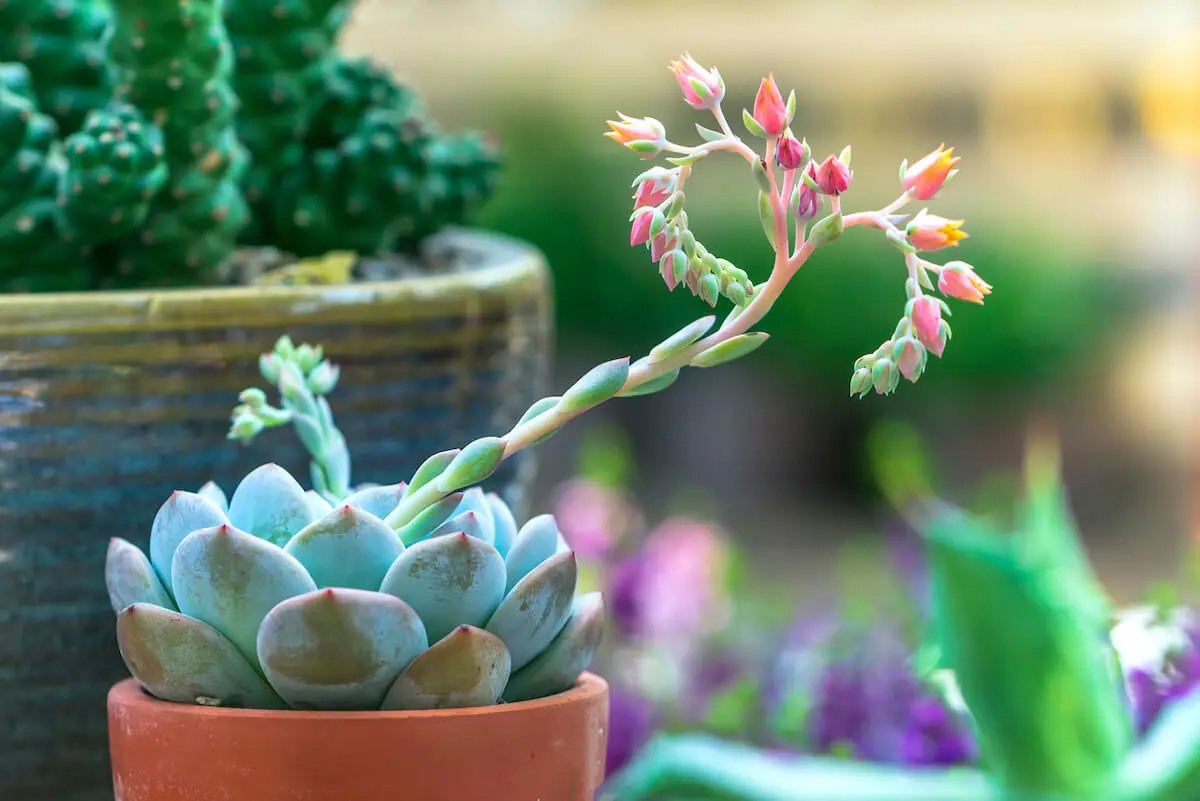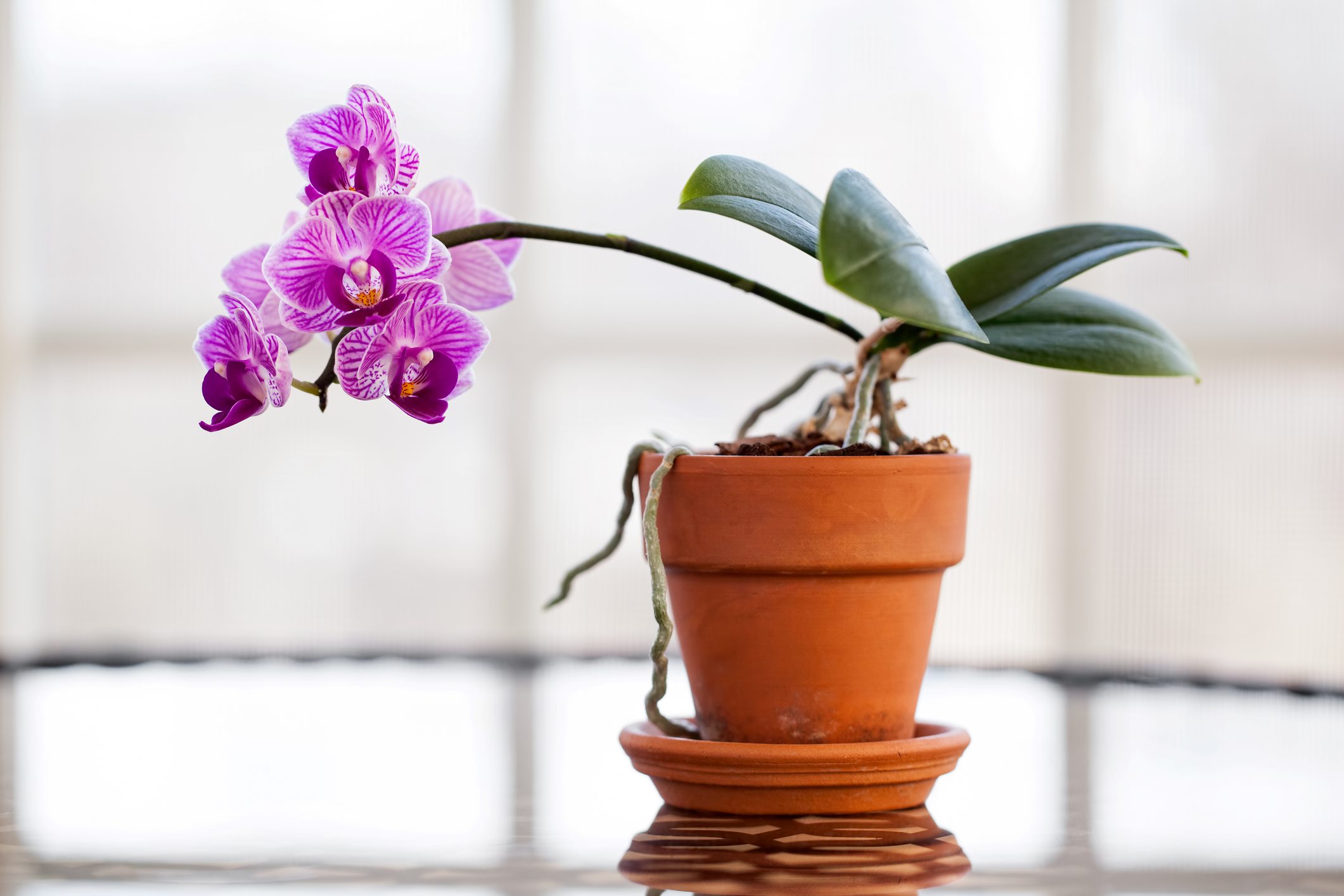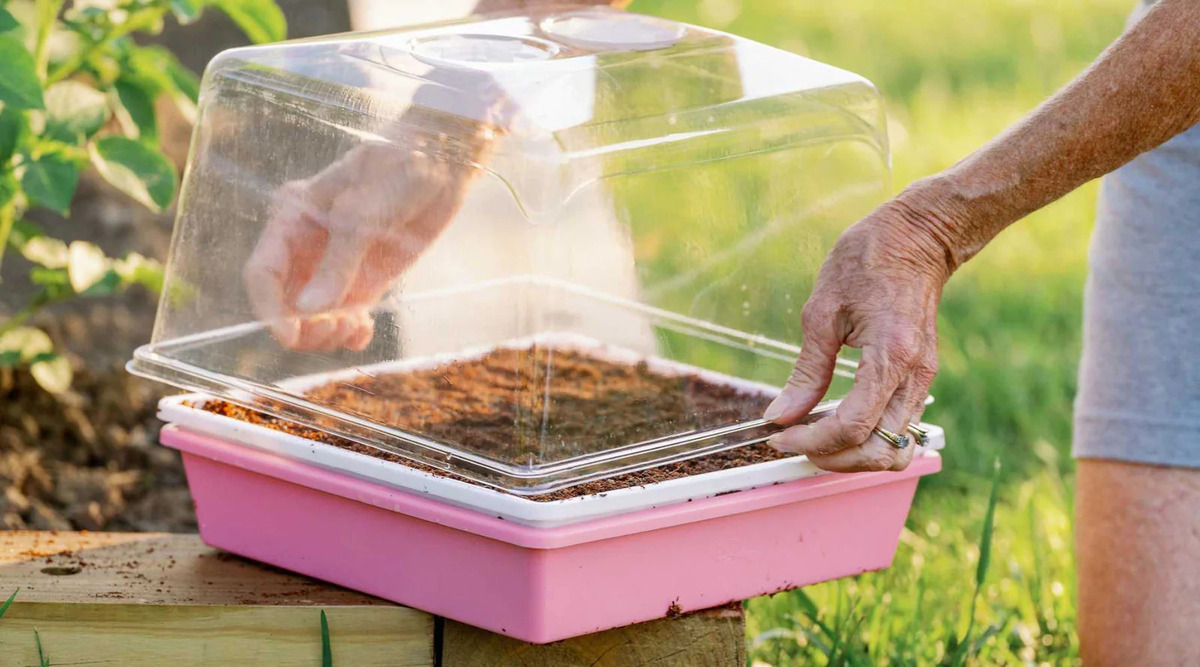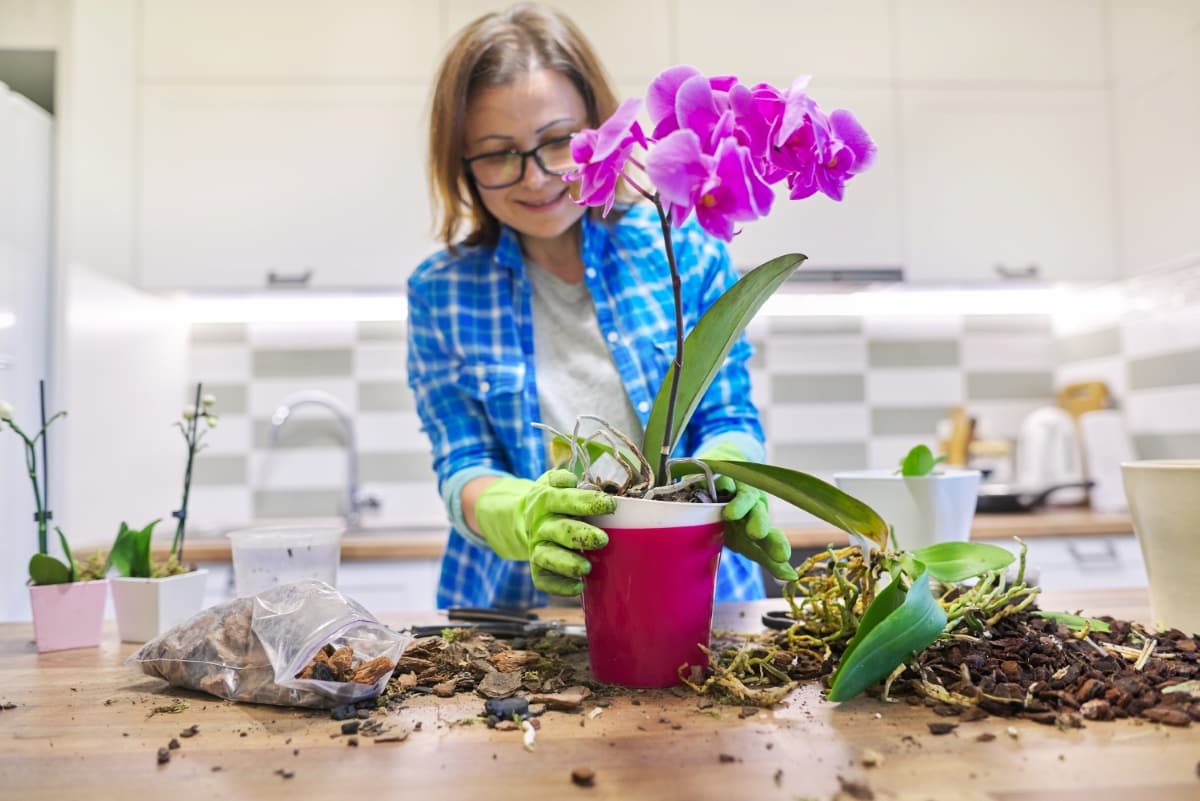Home>Types of Gardening>Ornamental Gardening>What To Do With Orchids When Flowers Fall Off
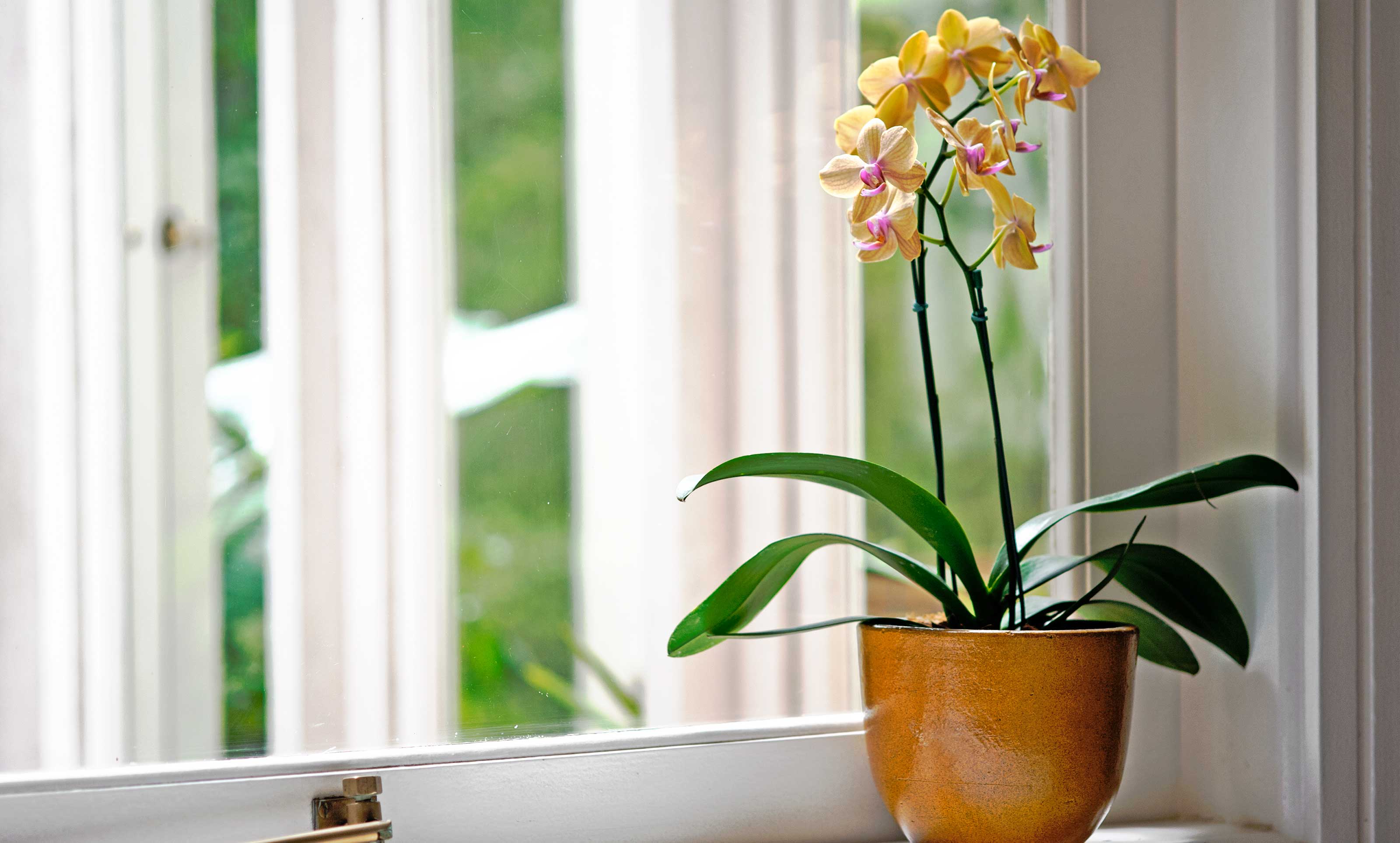

Ornamental Gardening
What To Do With Orchids When Flowers Fall Off
Modified: February 9, 2024
Learn how to properly care for your orchids when their flowers fall off. Discover valuable tips and tricks for maintaining beautiful ornamental gardens.
(Many of the links in this article redirect to a specific reviewed product. Your purchase of these products through affiliate links helps to generate commission for Chicagolandgardening.com, at no extra cost. Learn more)
Table of Contents
Introduction
Welcome to the enchanting world of ornamental gardening, where beauty and nature converge to create stunning landscapes. If you have a passion for gardening and prefer to add a touch of elegance to your outdoor space, then ornamental gardening is the perfect avenue to explore. One key aspect of ornamental gardening is the cultivation of ornamental plants, such as orchids.
Orchids are renowned for their delicate and alluring beauty. With their vibrant colors and intricate petal formations, these magnificent flowers have captivated gardeners and enthusiasts for centuries. However, as with any living organism, orchids go through natural growth cycles, including periods of bloom and dormancy.
Understanding the life cycle of orchids is essential for their proper care and maintenance. It allows you to anticipate and respond to the various needs of these fascinating plants. One of the inevitable phases in an orchid’s life cycle is the falling off of its flowers. While it may initially be disheartening to witness the petals wither and drop, it is a normal occurrence and provides an opportunity for new growth and future bloom.
In this comprehensive guide, we will explore the reasons behind flower loss in orchids, as well as the steps you can take to enhance their health and promote new flower growth. From proper care and maintenance techniques to fertilizing and watering tips, we will provide you with a wealth of knowledge and practical advice to help you navigate through this natural process.
So, put on your gardening gloves and get ready to embark on a journey through the world of ornamental gardening. With our guidance, you will not only gain a deeper understanding of the fascinating life of orchids but also learn how to create a thriving environment that will showcase their splendor for years to come.
Understanding the Life Cycle of Orchids
Before delving into the specifics of what to do when orchid flowers fall off, it is crucial to have a clear understanding of the life cycle of these remarkable plants. Orchids have a unique growth pattern that consists of alternating periods of growth and dormancy.
During the growth phase, orchids focus their energy on developing new leaves, roots, and flower spikes. This stage is characterized by vibrant blooms that can last for several weeks or even months, depending on the orchid variety. However, once the flowers have completed their life cycle and served their purpose, they naturally begin to wither and fall off.
This phase, known as flower loss, is a completely normal and essential part of an orchid’s life cycle. It is important to remember that orchids are perennial plants, and their primary goal is to reproduce and ensure future generations. The falling off of flowers allows the plants to conserve energy and direct resources towards other vital processes, such as root development and dormancy.
Additionally, understanding the various types of orchids can provide valuable insights into their specific growth patterns. There are two main categories of orchids: sympodial and monopodial.
Sympodial orchids, such as Cattleyas and Oncidiums, have a rhizome or creeping stem that grows horizontally. These orchids produce pseudobulbs, which are swollen stem sections that store water and nutrients. Each pseudobulb has a specific growth cycle, with mature bulbs producing flowers while older ones gradually lose their leaves and become dormant.
On the other hand, monopodial orchids, including Phalaenopsis and Vandas, have a single vertical stem that continuously grows upwards. These orchids do not produce pseudobulbs, and their leaves remain intact throughout the plant’s life. Monopodial orchids typically have a longer growth cycle, with new leaves and roots continuously forming from the tip of the stem and blooming occurring at various intervals.
By understanding the unique characteristics and growth patterns of different orchid types, you can better anticipate and support their needs throughout their life cycle. Remember, the journey of an orchid is a fascinating one, filled with natural stages of growth and dormancy that ultimately lead to the enchanting blossoms that we adore.
Reasons for Flower Loss in Orchids
As a gardener or orchid enthusiast, it is important to recognize the reasons behind flower loss in orchids. While the falling off of flowers is a natural part of the orchid’s life cycle, there are also external factors that can contribute to premature flower loss or a lack of blooming. Understanding these factors can help you address any issues and optimize conditions for future blooms.
One common reason for flower loss in orchids is the end of the plant’s natural blooming period. Orchids have a predetermined lifespan for their flowers, which varies based on the specific orchid species or cultivar. Once the flowers reach the end of their lifespan, they will naturally wither and fall off. This is a normal process and indicates that the orchid has completed its blooming cycle.
Environmental conditions play a significant role in the health and blooming of orchids. Insufficient light or improper light levels can lead to flower loss. Orchids require the right balance of light to thrive and produce vibrant blooms. Too little light may hinder photosynthesis and hinder the plant’s ability to sustain its flowers. Conversely, too much direct sunlight can cause sunburn and damage the delicate petals, leading to premature flower loss.
Temperature fluctuations can also impact flower longevity in orchids. Sudden drops or drastic changes in temperature can stress the plant and cause premature flower loss. Orchids generally prefer stable temperatures within specific ranges that are conducive to blooming. It is important to provide the appropriate temperature conditions to support healthy flower development and maintenance.
Inadequate watering and humidity levels can also result in flower loss. Orchids have specific moisture requirements and can be sensitive to overwatering or underwatering. Both extremes can stress the plant and affect its ability to sustain its flowers. Maintaining a consistent watering schedule and providing a suitable level of humidity can help prevent flower loss and promote healthy growth.
Nutrient deficiencies or imbalances can hinder flower development and lead to suboptimal blooming. Orchids require specific nutrients, such as nitrogen, phosphorus, and potassium, as well as trace elements, to thrive. If an orchid is lacking essential nutrients or if there is an imbalance in the fertilizer application, it may result in weaker flowers or early flower loss.
Lastly, pest infestations and diseases can also contribute to flower loss in orchids. Insects, such as aphids or spider mites, can damage the flowers and cause them to drop prematurely. Fungal or bacterial infections can also affect the overall health of the plant and result in the loss of flowers. Regular inspections and prompt treatment of any pests or diseases can help prevent flower loss and maintain the vitality of your orchids.
By understanding the reasons behind flower loss in orchids, you can take appropriate measures to address these factors and ensure optimal conditions for blooming. Providing the right environment, maintaining proper watering and fertilizing techniques, and being vigilant against pests and diseases will greatly enhance the chances of your orchids producing long-lasting and robust flowers.
Proper Care and Maintenance After Flower Loss
After experiencing the natural process of flower loss in your orchids, it is important to provide proper care and maintenance to support the plant’s health and encourage new growth. While the loss of flowers may seem disappointing, it is an opportunity for your orchid to focus its energy on other vital aspects of its growth cycle.
One essential step in caring for your orchid after flower loss is to continue providing the appropriate environmental conditions. This includes ensuring adequate light levels, temperature control, and humidity. Orchids generally thrive in bright, indirect light, so placing them near a window with filtered sunlight can be beneficial. Additionally, maintaining consistent temperatures within the optimal range for your specific orchid variety will promote healthy growth.
Proper watering techniques are crucial to preventing stress and establishing optimal moisture levels for your orchid. It is essential to allow the growing medium to dry out slightly between watering sessions to avoid overwatering. Additionally, using a well-draining potting mix specifically formulated for orchids can help prevent waterlogged roots, which can lead to root rot and other issues.
Although your orchid may not have flowers at the moment, it is still important to continue fertilizing it regularly. Use a balanced orchid fertilizer diluted to the recommended concentration to provide the necessary nutrients for healthy growth. Follow the manufacturer’s instructions, and be cautious not to overfertilize, as this can lead to burn or damage to the roots.
Pruning or trimming off any dead or damaged foliage can help improve the overall appearance of the plant and prevent the spread of diseases. Use sterilized tools to make clean cuts, removing only the affected portions. Be careful not to remove new growth points or viable sections of the plant.
Another vital aspect of post-flower care is providing the necessary support for future flower growth. Many orchids have the potential to rebloom from the same flower spike or develop new spikes altogether. Taking steps to stimulate the growth of new flower spikes can be done by providing optimal conditions, including the appropriate light levels, temperature, and humidity. Additionally, some orchid varieties respond positively to a period of cooler temperatures or reduced watering to encourage the formation of new flower spikes.
Throughout the post-flower period, continued observation and regular monitoring will help you identify any potential issues promptly. Keep an eye out for signs of pests, diseases, or nutrient deficiencies. Early detection allows for timely intervention and prevents further damage to your orchid.
Remember, orchids are resilient plants that possess the ability to rebound and produce spectacular blooms with the right care and maintenance. By providing optimal conditions, consistent watering, appropriate fertilization, and monitoring for any potential problems, you can ensure that your orchids thrive even after the temporary loss of flowers.
Trimming Off the Stalk: Yes or No?
One common question that arises after the flowers fall off an orchid is whether or not to trim off the stalk or flower spike. The answer to this question depends on the specific orchid variety and its growth pattern.
For some orchids, such as Phalaenopsis, it is generally recommended to leave the stalk or flower spike intact after the flowers have fallen off. This is because Phalaenopsis orchids have the ability to rebloom from the same flower spike. By keeping the stalk, you provide the plant with an opportunity to produce new branches or buds from the nodes along the spike.
Other orchid varieties, such as Cattleyas or Oncidiums, have different growth patterns and are characterized by pseudobulbs. After the flowers fall off a pseudobulb, it is acceptable to trim the stalk near its base. This encourages the orchid to direct its energy towards the growth of new pseudobulbs and leaves, rather than investing resources into an old stalk that will not produce additional flowers. Trimming the stalk also helps prevent any potential diseases or pests from lingering on the spent flower spike.
Before making a decision on whether to trim off the stalk, it is essential to closely examine the orchid. If the stalk appears dry, discolored, or if there are signs of disease or decay, it is advisable to cut it off. Use sterilized pruning shears or a sharp knife to make a clean cut as close to the base of the plant as possible.
However, if the stalk is still green and healthy-looking, and there are nodes along the spike, it is best to leave it intact. With proper care and maintenance, the orchid may produce new flower branches or buds, brightening your space with another round of beautiful blooms.
Ultimately, the decision to trim off the stalk after the flowers fall off an orchid depends on the specific variety and its growth pattern. Observing the condition of the stalk and considering the potential for future growth and blooming will guide you in making the right choice for your orchid.
Stimulating New Flower Growth
The prospect of new flower growth is an exciting one for any orchid enthusiast. While orchids have their own natural growth cycles and timing for blooming, there are several steps you can take to stimulate new flower growth and increase the chances of a vibrant and abundant bloom.
One key factor in stimulating new flower growth is providing optimal lighting conditions. Orchids generally thrive in bright, indirect light. Placing your orchid near a window with filtered sunlight or providing artificial grow lights that mimic natural light can encourage the development of flower spikes. Adequate light is crucial for photosynthesis, which fuels the production of energy required for flower formation.
In addition to proper lighting, temperature regulation plays a significant role in stimulating new flower growth. Many orchid varieties require a period of cooler temperatures to trigger blooming. This temperature drop, known as a temperature differential, can be achieved by exposing the orchid to slightly lower nighttime temperatures for a period of several weeks. Always ensure that the temperature remains within the orchid’s preferred range, as extreme shifts can stress the plant.
One technique used by orchid enthusiasts to promote new flower growth is the practice of “cooling” or “resting” their orchids. This involves reducing watering frequency and providing slightly lower temperatures for a few weeks. This temporary period of controlled stress can encourage the orchid to initiate new flower spikes as it reacts to the changing conditions.
Fertilizing is another important aspect of stimulating new flower growth. Providing the necessary nutrients during active growth periods can support the development of healthy flower spikes. However, it is important to use a balanced orchid fertilizer and follow the recommended application frequency and dilution instructions. Overfertilizing can lead to excessive vegetative growth and hinder flower formation.
Proper hydration is crucial for orchid health, and maintaining a consistent watering routine is essential. Orchids have specific moisture requirements, and providing adequate hydration is essential for the plant to direct energy towards flower formation. It is important to allow the growing medium to partially dry out between watering sessions to prevent waterlogged roots, which can inhibit flower production.
Another technique employed by some orchid enthusiasts is the application of a growth hormone known as a “bloom booster.” These products contain specific plant hormones that stimulate flower formation. While the effectiveness of bloom boosters can vary, many orchid growers have reported success in promoting new flower growth with their use. It is important to carefully follow the instructions on the product label and use bloom boosters sparingly.
Patience is key when it comes to new flower growth in orchids. Orchids have their own natural blooming cycles, and it may take time for a plant to develop new flower spikes. It is important to provide consistent care, including proper lighting, temperature regulation, watering, and fertilizing, while allowing the orchid the time it needs to initiate and develop new flower buds.
By implementing these techniques and providing the optimal growing conditions, you can stimulate new flower growth in your orchids and enjoy their breathtaking blooms time and time again.
Fertilizing and Watering Techniques
Proper fertilizing and watering techniques are critical for the health and vitality of orchids. These practices ensure that the plants receive essential nutrients and hydration to support growth, blooming, and overall well-being. Understanding the specific needs of orchids and implementing the right techniques will help you maintain healthy plants and vibrant blooms.
When it comes to fertilizing orchids, it is important to use a balanced orchid fertilizer formulated specifically for their unique nutritional requirements. The three key nutrients for orchids are nitrogen (N), phosphorus (P), and potassium (K). These can be found in most orchid fertilizers, often labeled with an NPK ratio, such as 20-20-20 or 30-10-10.
Follow the instructions provided by the manufacturer for dilution ratios and frequency of application. It is generally recommended to fertilize orchids weekly or bi-weekly during the active growth period, which is typically spring and summer. During the dormant phase, which is usually in fall and winter, reduce fertilizer application to once a month or suspend it altogether.
When applying fertilizer, it is essential to mix it with water and apply it to damp soil or growing medium. This helps prevent root burn and ensures that the nutrients are readily available to the orchid’s roots. Overfertilizing can be detrimental to orchids, so be mindful not to exceed the recommended dosage or frequency.
Watering orchids requires careful consideration of their moisture needs. Orchids typically prefer a moist, well-drained growing medium. It is essential to strike a balance between keeping the medium consistently moist without allowing it to become waterlogged. Overwatering can lead to root rot and other issues, while underwatering can cause dehydration and hinder growth.
One helpful technique for watering orchids is the “soak and dry” method. This involves thoroughly drenching the growing medium during each watering session and allowing any excess water to drain out completely. Once the top layer of the growing medium feels nearly dry to the touch, it is time to water again. Avoid letting the orchid sit in standing water, as this can lead to root rot.
Some orchids, such as those from tropical rainforest environments, benefit from higher humidity levels. To increase humidity around your orchids, you can place a tray with water near the plants or use a humidifier. This helps create a microclimate that mimics their natural habitat and promotes healthy growth.
While it is important to water orchids consistently, adjustments may be necessary depending on the specific orchid variety and environmental conditions. Factors such as temperature, light levels, and airflow can impact the rate at which orchids absorb water. Regular observation and monitoring of the plant’s moisture needs will help you determine the frequency and amount of watering required.
By implementing proper fertilizing and watering techniques, you provide your orchids with the essential nutrients and hydration they need for robust growth and stunning blooms. It is essential to be mindful of the specific needs of your orchid variety and adjust your fertilizing and watering practices accordingly.
Common Mistakes to Avoid
While maintaining orchids can be a rewarding experience, there are some common mistakes that orchid enthusiasts should avoid to ensure the best possible outcomes for their plants. By being aware of these pitfalls and taking preventive measures, you can help your orchids thrive and minimize the risk of any potential setbacks.
One common mistake is overwatering orchids. Orchids, especially those potted in well-draining media, do not tolerate constant moisture around their roots. Overwatering can lead to root rot and other detrimental conditions. It is crucial to allow the growing medium to dry out slightly between watering sessions. Use the “soak and dry” method and ensure that excess water drains completely from the pot.
On the other hand, underwatering is also a common mistake. Orchids do require regular hydration, and neglecting to water them adequately can cause dehydration and hinder growth. Understanding the specific moisture needs of your particular orchid variety, observing the condition of the growing medium, and adjusting watering frequency accordingly can help avoid this mistake.
Providing inappropriate lighting conditions is another error to avoid. Orchids require adequate light to thrive and produce vibrant blooms. Placing orchids in areas with too little light can result in weak growth and a lack of flowering. Conversely, subjecting them to excessive direct sunlight can scorch the leaves and cause damage. Finding the right balance of bright, indirect light is essential for optimal orchid health.
Improper potting and use of the wrong growing media can also hinder orchid growth. Orchids typically prefer well-draining media, such as bark, sphagnum moss, or a combination of these materials. Using regular potting soil or inadequate drainage can lead to waterlogged roots and cause harm to the plant. It is best to research and choose a growing medium appropriate for your specific orchid variety.
Overfertilizing orchids is a common mistake that can have adverse effects on plant health. Providing excessive amounts of fertilizer or applying it too frequently can lead to nutrient burn and damage the plant’s roots. It is important to follow the manufacturer’s recommendations for dilution ratios and frequency of application. Using a balanced orchid fertilizer and exercising caution will help prevent this mistake.
Ignoring the need for proper air circulation is another potential error. Orchids require good air movement around their leaves to prevent the development of fungal or bacterial diseases. Poor airflow can also contribute to excessive humidity, which can create an environment conducive to pests. Placing fans or ensuring that orchids are not overcrowded can help maintain proper air circulation.
Lastly, neglecting to regularly inspect and monitor orchids for pests or diseases can have detrimental consequences. Common pests that affect orchids include aphids, mealybugs, spider mites, and scale insects. Promptly identifying and treating any pest or disease issues will help prevent them from spreading and causing harm to your orchids.
By being mindful of these common mistakes and taking proactive measures to avoid them, you can create a healthy and thriving environment for your orchids. Understanding the specific needs of your orchid variety, practicing proper watering and fertilizing techniques, providing appropriate lighting and airflow, and actively monitoring for any signs of pests or diseases will greatly contribute to the success and longevity of your orchids.
Conclusion
Orchids are truly remarkable plants that can grace any space with their exquisite beauty. Understanding their unique life cycle, addressing common challenges, and implementing proper care techniques is essential for their health and blooming success. By following the guidelines outlined in this comprehensive guide, you can enhance your ornamental gardening experience and create an environment that allows your orchids to thrive.
From understanding the natural process of flower loss to knowing when to trim off the stalk, each step in the care and maintenance of orchids plays a crucial role in their overall well-being. By providing proper lighting, temperature control, watering, fertilizing, and paying attention to airflow and pest control, you can create the optimal conditions for your orchids to flourish.
Remember that orchids are resilient plants but also require patience and attentiveness. Each orchid variety has its own specific needs and growth patterns, and it is essential to tailor your care techniques accordingly. Regular observation, monitoring, and adjustment will contribute to the long-term health and success of your orchids.
Ornamental gardening is a rewarding journey that allows us to connect with nature, cultivate beauty, and experience the joys of nurturing living organisms. By delving into the fascinating world of orchids and applying the knowledge and techniques outlined in this guide, you can create an enchanting display of vibrant blooms that will captivate the senses and bring joy for years to come.
So, embrace the wonder and elegance of orchids in your ornamental gardening endeavors. With proper care, dedication, and a touch of creativity, you can create a breathtaking garden filled with the splendor of these magnificent flowering plants.
